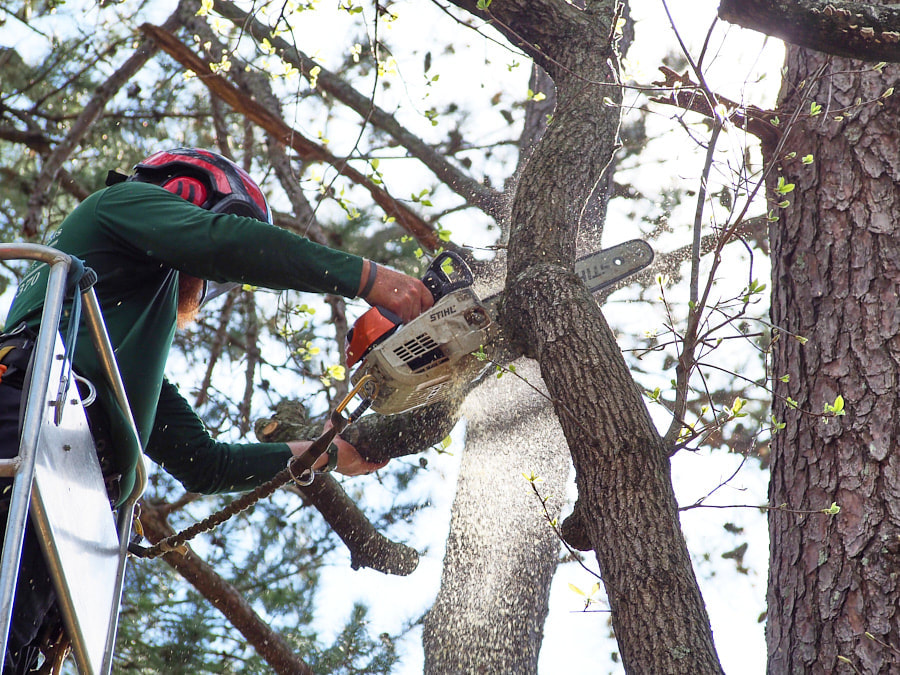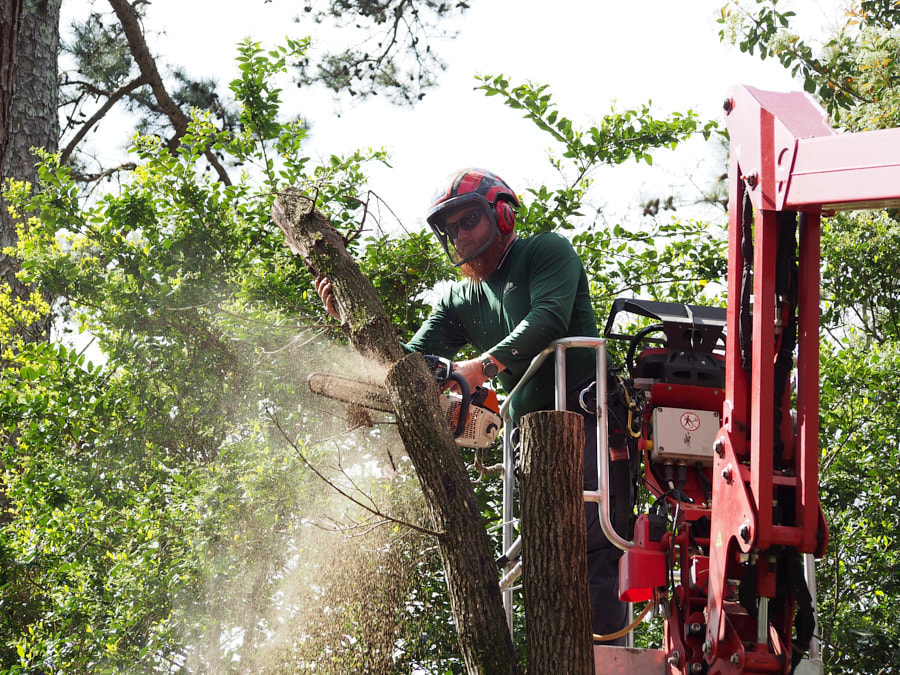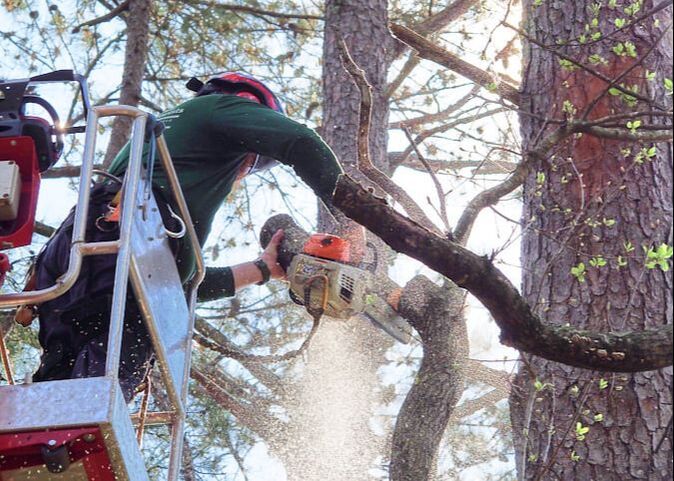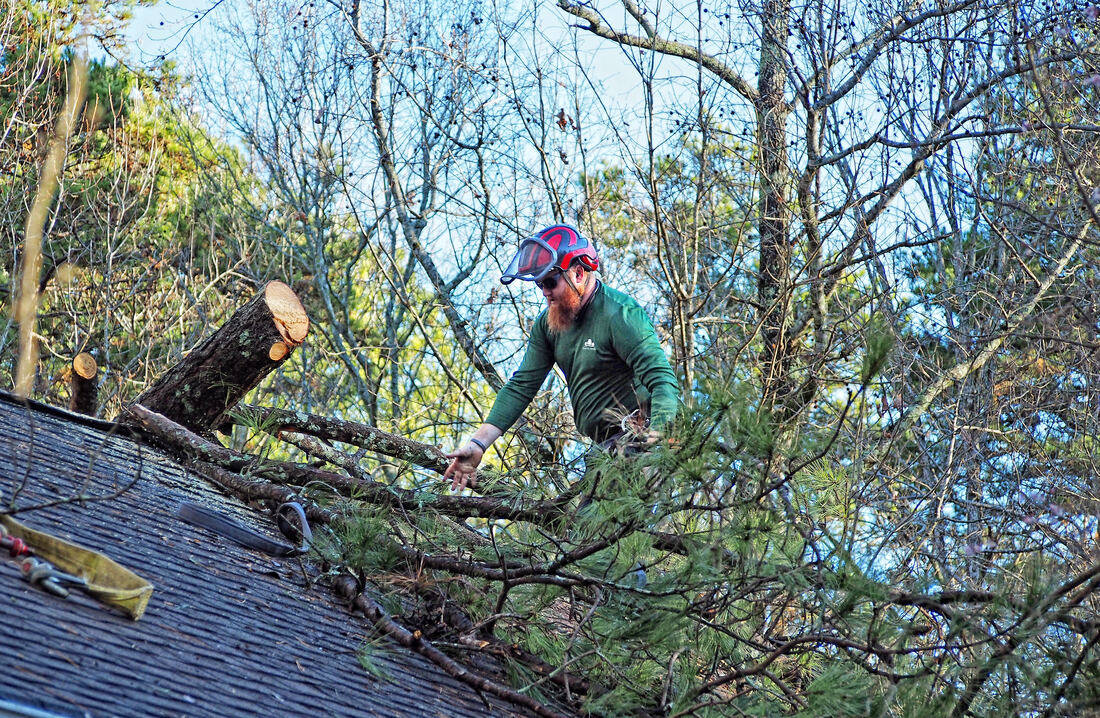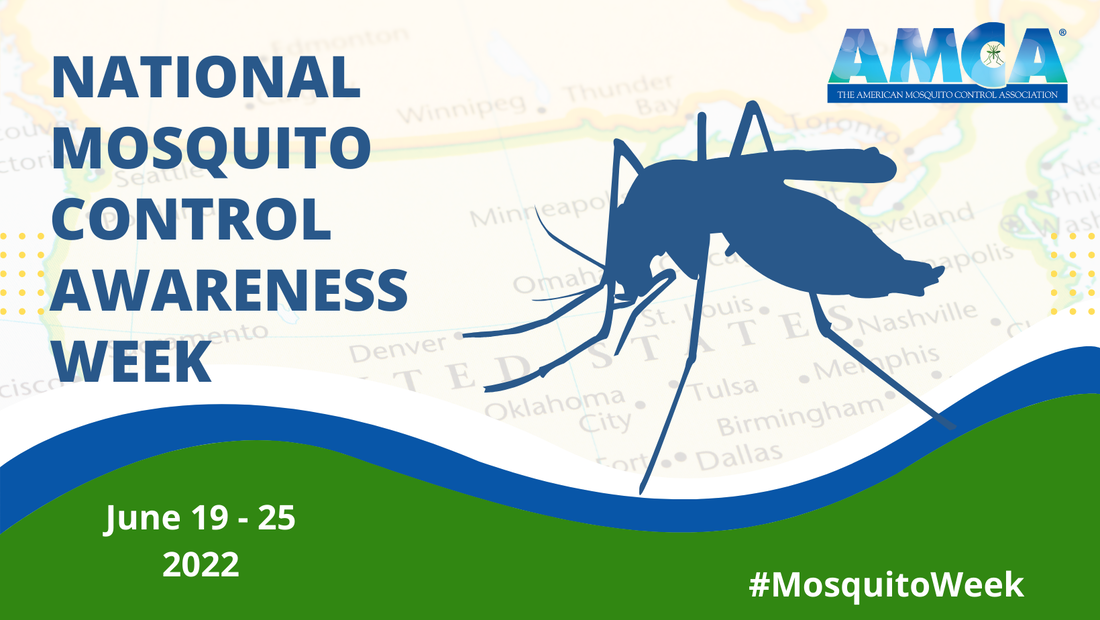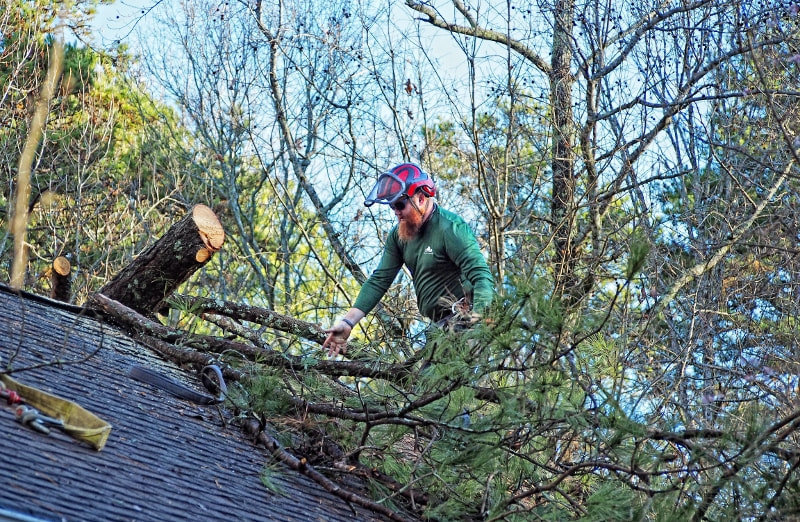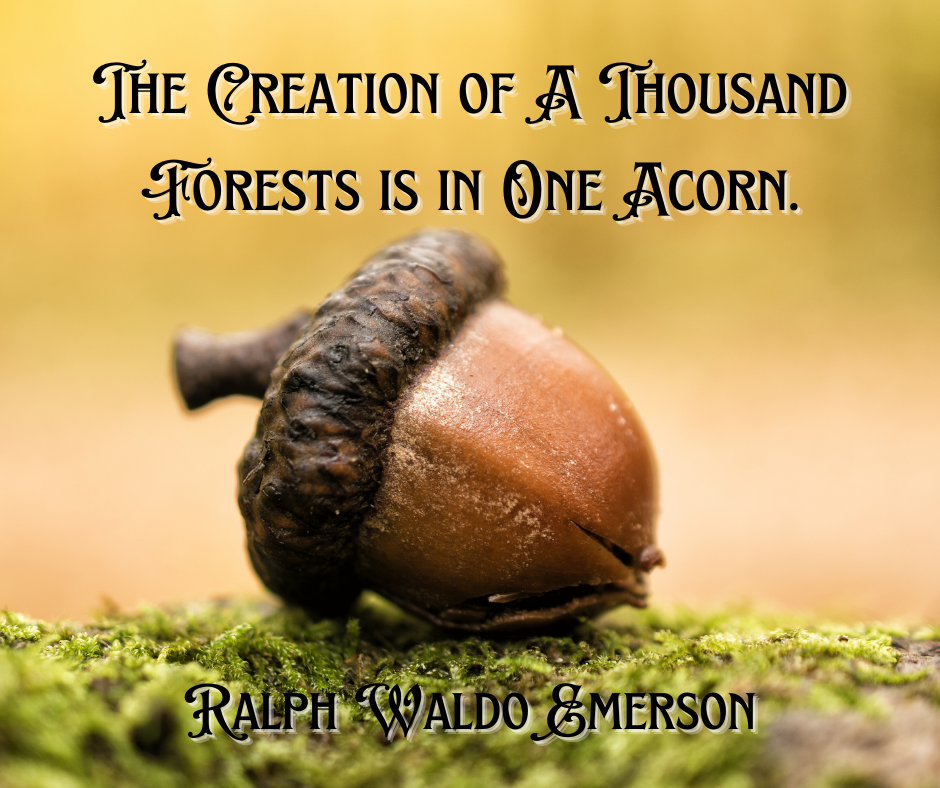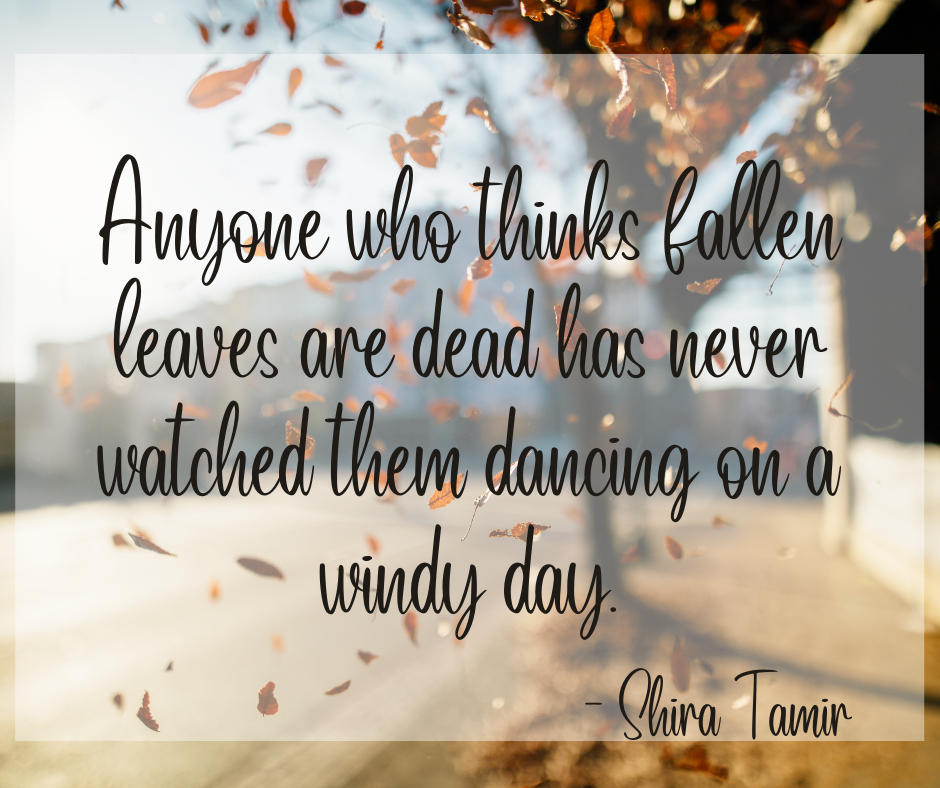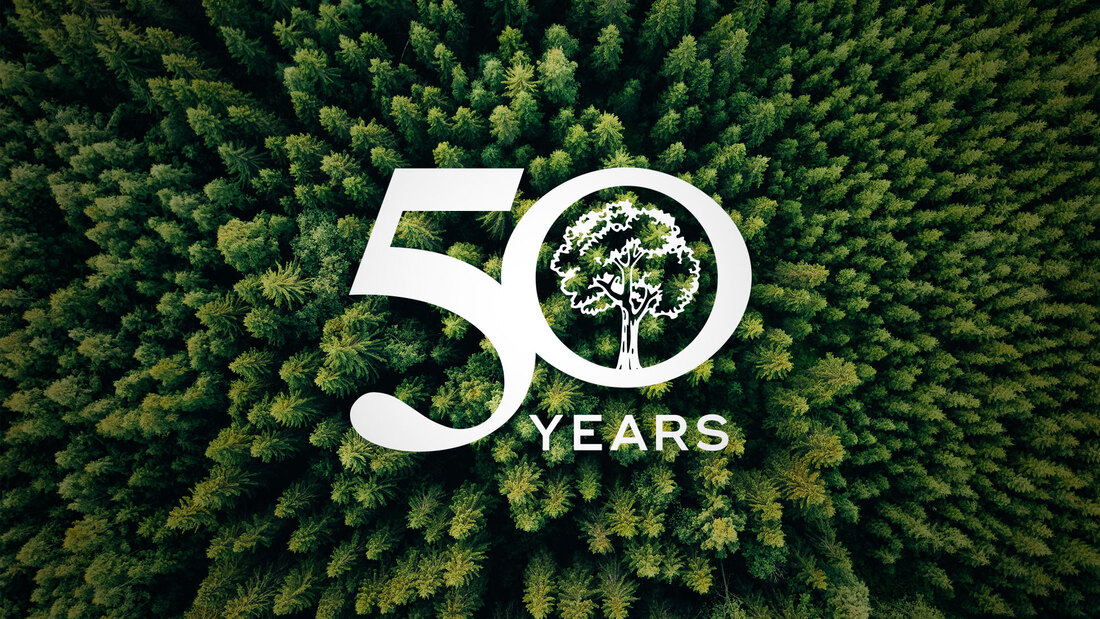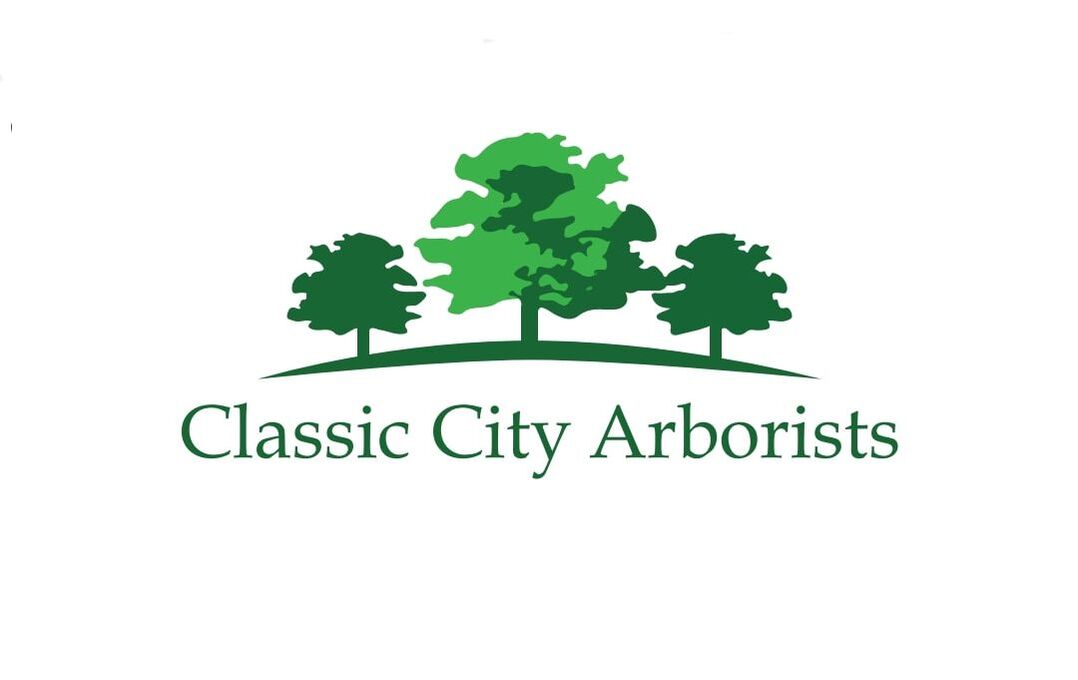|
News and Blog Articles
|
|
Who doesn’t like a good deal? From booking a hotel room during the off-season to snagging the latest Groupon, everyone loves the thrill of not having to pay full price. And when it comes to paying for services around your home that you weren’t expecting to have to pay for anytime soon (like tree removals)? Even better! Tree removals can be costly, and if you’ve got more than one, the price can easily become overwhelming. The Cost of Tree Service depends on a variety of factors, like how big the tree is, where it’s located, any extenuating circumstances or safety hazards, and even things like what kind of equipment and insurance the tree service company has. But just like with other products and services, there are ways to help mitigate the cost of tree service – like having your trees removed or pruned during the winter months, for example. Why Is Tree Service More Affordable in the Winter?DormancyNo matter what kind of tree work you’re doing, the game plan, process, and success all hinge on the tree itself. And in the winter months, trees are dormant, conserving their energy for surviving the cold season rather than new growth. This might not seem like a big deal, but think about it. A dormant tree doesn’t have any leaves or flowers on it. That means easier access for tree work, and less debris scattered around in the process. An easier job and less clean-up means cheaper cost! Off-SeasonIn addition to the work potentially being easier to accomplish, the need for tree work slows in the winter. The holiday season means people are busy visiting family, having family visit, attending parties, and buying gifts. That dead tree you saw tends to move to the back of the priority list in the face of a full calendar. People also tend to spend more time inside in the winter, preferring the warmth of the fireplace to the cold, wet backyard. With less time spent looking at the trees around you, your chances of spotting a problem tree go down. It’s also much easier to notice that your tree looks sickly or dead when its leaves are diseased, dying, or not there when they’re supposed to be. Everything looks dead in the winter, so even if you are looking, dead trees can blend right in. With fewer people prioritizing tree work, that leaves tree service companies doing their best to drum up some business. And the best way to encourage business? Lower prices! As an added bonus, less business means less wait time. During the summer, it could take a week or two to get an appointment scheduled for an estimate. Even once you have the quote, you could still be looking at 6 to 8 weeks on the waiting list before your work can be completed. But in the winter months, with less people asking after quotes, you’re likely to get an appointment much faster. And once you decide to accept the estimate, your wait time will probably be closer to 2 to 3 weeks! What Else Should I Consider? Another way to save on a tree removal? Don’t wait. When it comes to a dead or dying tree, the longer it’s allowed to decline, the more complex and dangerous the situation becomes. This, in turn, will make the removal more expensive. To help avoid that, it’s important to periodically give any trees on your property a once-over. Check out our article on the 5 Simple Signs To Identify If Your Tree Is In Decline for tips on what to look for. While dead trees can be camouflaged in the winter, the lack of leaves and flowers can also make it easier to spot things like parasites or cavities. If you think one of your trees might be a risk, it’s best to have a Certified Arborist come give it a look. At Classic City Arborists, we offer free estimates to all our customers. Scott Rushing, our owner and Certified Arborist, will listen to your concerns, offer his professional opinion, and then provide pricing for any work that you discuss. If you’ve got a tree you’re worried about, fill out our Contact Form today. The safety of your home and family is our top priority, which is why we maintain Worker’s Comp Coverage and General Liability Insurance and Auto Insurance, to protect both our customers and our employees. Give us a call today to see how we can improve the safety of your yard at a cheaper rate (with the same high quality work!) than you’ll find during the summer. AuthorRebekah Rushing is a mother of three and the co-owner of Classic City Arborists. When she isn’t dealing with snotty noses and dirty diapers, she handles the accounting & finance, marketing & advertising and human resources. While she is no longer the voice on the phone, she is still hard at work in the background keeping everything running smoothly.
0 Comments
To no one’s surprise, we spend a lot of time talking about trees here at Classic City Arborists. There are a lot of specialized terms and phrases we use, and it’s easy to forget that not everybody knows what we’re talking about. Whether you’re reading one of our articles, learning about our newest Tree of the Month, or just doing some research on how best to take care of your trees, we’ve compiled this appendix of basic tree care terminology that should help you along the way. Annual Plants: Plants that will only live through one growth (flowering) cycle Bark: The outermost layer of a tree’s trunk and branches Biennial Plants: Plants that will live through only two growth (flowering) cycles Branch Thinning: Removing interior branches to reduce weight and enhance structural integrity Brush Clearing: Cutting down underbrush, such as shrubs, vines, saplings, and more to clear the ground surrounding a stand of trees. Learn more about the importance of brush clearing here! Canopy Raising: Removing lower branches up to a certain height to create more ground clearance Climate Zone: A geographic designation for identifying what plants can survive a certain climate Co-Dominant: A tree with two or more leaders rather than a single trunk Crown (also called Canopy): the upper part of the tree, from the lowest branch to the highest point of the tree Deadwooding: Removing any and all deadwood from the interior and exterior of a tree Direct Sunlight: exposure to the sun without any obstructions Full Shade: Less than 1 to 3 hours of indirect sunlight a day Full Sun: at least 6 hours of direct sunlight a day Indirect Sunlight: exposure to the sun through an obstruction, such as other foliage, window blinds, etc Invasive Species: Plants that have been introduced to a location they did not evolve in, usually by human interference Leader: A tree branch from which many other branches grow, but not all Maturity: The term for when a tree is considered ‘fully grown’ and growth slows considerably Native Species: Plants that evolved where they are located, or “is from here” Partial Shade: 3 to 6 hours of indirect sunlight a day Partial Sun: 3 to 6 hours of direct sunlight a day Perennial Plants: Plants that will live through two or more growth (flowering) cycles Tree Pruning: Removing unnecessary branches, and sometimes even roots. Think dead, dying, diseased, or overcrowded limbs. Tree Shaping: Selectively trimming foliage to create a desired shape out of the canopy Tree Topping: Cutting all upper branches of a tree to reduce its overall height Tree Trimming: Selectively and strategically cutting growth for a more attractive overall appearance and to promote healthy growth patterns Trunk: The main branch of a tree, from which all branches grow AuthorEmily Casuccio is sister and sister-in-law to Rebekah and Scott Rushing, and has over half a decade of experience in copywriting, copyediting, proofreading, and developmental storyboarding. She's worked with both published and undiscovered authors on both fiction and nonfiction, and takes pride in supporting local businesses. Her passion lies in the written word and helping authors of all capacities realize their dreams and achieve their fullest potential. To learn more about her, read samples of her work, or contact her, visit her online portfolio. Lawns can be pretty high-maintenance, what with all the mowing and watering and edging. And even with all that work, sometimes you still end up with a bunch of dead patches disrupting the green view. So what can you do? The first thing to do if you spot dead areas in your lawn is identify the culprit. There are plenty of diseases, funguses, and other ailments that might cause damage, and to properly treat your lawn, you’ll need to know what exactly is causing the problem. Large Patch DiseasePerhaps the most common affliction of otherwise award-worthy lawns is Large Patch Disease. Caused by the fungus Rhizoctonia solani, this disease does exactly what the name suggests: creates large brown or grey patches of dead or dying turf. Patches usually start around 2 to 3 feet in diameter, but if left unchecked, they can expand up to 10 feet or even more. Treatment: Avoid nitrogen-rich fertilizers, test soil and apply lime according to test recommendations, spray fungicides designed specifically for Large Patch. Summer Patch DiseaseSummer Patch Disease, also known as Magnaporthe poae, causes much smaller areas of damage, usually in circles or irregular blobs. Often, these shapes will overlap each other, creating squiggly lines across your yard. Unlike Large Patch Disease, Summer Patch Disease ranges from bronze-yellow to straw-yellow in color. This disease is common when soil temperatures get too high, are too compacted, or have poor drainage. Treatment: Avoid watering during the hottest part of the day. Aerate your lawn to improve root growth, and use acidifying fertilizers to lower the soil pH below 6.5. Fairy RingsThis disease might sound whimsical, but it can do some serious damage to your yard. Fairy Rings start out as a partial or full ring of darker green grass that appears lush and full, but is surrounded by a band of dead turf. Sometimes, the dead turf will host mushrooms, but not always. This is caused by a soil-based fungus that grows in a thick, matted layer, preventing the surrounding grass from absorbing water and nutrients. Treatment: lightly fertilize the area and regularly aerate your entire lawn to break up matts beneath the surface. Dollar Spot DiseaseSclerotinia homoeocarpa is commonly known as Dollar Spot Disease, because it causes silver-dollar-sized patches of sunken, bleached-out grass. These patches may start pretty small, but they can grow as large as a foot in diameter if left untreated. Treatment: Only water occasionally, but when you do, water deeply to get down to the base of the roots. Always water in early morning to prevent long periods of leaf wetness. Apply nitrogen-rich fertilizers. So there you have it! The most common lawn diseases over summer, and what you can do to stop them in their tracks. Of course, the best treatment is prevention, so be sure you’re following the best lawn care possible to keep your yard happy and healthy. AuthorEmily Casuccio is sister and sister-in-law to Rebekah and Scott Rushing, and has over half a decade of experience in copywriting, copyediting, proofreading, and developmental storyboarding. She's worked with both published and undiscovered authors on both fiction and nonfiction, and takes pride in supporting local businesses. Her passion lies in the written word and helping authors of all capacities realize their dreams and achieve their fullest potential. To learn more about her, read samples of her work, or contact her, visit her online portfolio. With the heat of summer settling over us, these long days are perfect for sitting in a rocking chair on the porch, sipping cool iced tea, and watching the fireflies. The only thing that could ruin such a perfectly good evening would be a sudden and incessant itch on your leg. And your arm. And your foot? Mosquitoes are unwelcome but inevitable guests in these warmer months. But luckily, there’s plenty you can do to deal with them! Last week, we talked about the American Mosquito Control Association’s annual movement: National Mosquito Control Awareness Week. Their goal is to educate the public on how to approach mosquito population control without using pesticides. Check out our article to learn their 5-step plan to reduce the number of mosquitoes in your area. But despite your best efforts, sometimes there are too many variables outside your control. After all, you can’t go tramping through your neighbor’s yard to dump all their standing water! And when you visit the park, or spend an afternoon out on the lake? What can you do to get those pesky pests to buzz off? WearablesThere are plenty of wearable items you can buy to keep the mosquitoes away. Bracelets, sweatbands, necklaces, stickers, belt clip-ons… the choices are endless. Most of these accessories use citronella oil to ward off flying insects, though you’ll also find eucalyptus and lavender versions. Some may use a proprietary blend of repellants, not all of which are natural – be sure to read the label if you’re worried about any specific synthetic compounds. However, one of the biggest complaints with wearables is that they are either not strong enough and only ward off mosquitoes around the item itself, or are definitely strong enough to keep bugs away, but the smell is too overpowering to withstand. Bug SprayThis tried-and-true method involves spraying some kind of mosquito repellent directly on your skin. As such, you’ll have a little protection everywhere, rather than a lot of protection in just one spot like with a wearable. There are an endless number of brands to choose from, many of which offer all-natural, chemical-free options. Want to make your own bug spray at home? It’s easy! Just add essential oils to some carrier liquid (like water) and spritz.
The best essential oils for repelling mosquitoes are lemongrass, citronella, rosemary, lavender, eucalyptus, and mint (peppermint or spearmint will work, too). For your carrier liquid, you can use plain old distilled water, or a 1:1 ratio of water and witch hazel, or a 2:1 ratio of water to apple cider vinegar.
In general, for every 4 ounces of carrier liquid, you’ll want around 40-50 total drops of essential oil. For younger children, you may want to make a less concentrated spray with only 20-25 drops per 4 ounces of carrier liquid.
Essential Oil Blend Recipes
Wide-Range RepellentsIf you’re looking to keep mosquitoes away from a certain area, like your porch or the picnic table you’ve reserved at the park, then you might want to check out a wide-range repellent. These include things like candles, torches, incense sticks and nubs, and even cords you can use to lay down a protective perimeter. Most of these items will use citronella as their main repellent, though you can usually find lavender and/or eucalyptus alternatives if you dislike citronella. A newer option in this category world is the automatic repellent diffuser. These little devices emit an air-born repellent that creates a bubble of protection all around you. The main selling point of these kinds of devices are that they don’t have a strong smell, like citronella does, and they don’t require any flame, which means no smoke and no fire hazard. Traps/ZappersLastly, we have the more lethal way of dealing with mosquitoes. Simpler options, like sticky tape, attract mosquitoes by smell. Once a mosquito lands, it gets stuck, so it can’t bother you anymore. These methods are effective, though some find them cruel, as the mosquito can live quite a while stuck in the trap. They can also be unsightly, and don’t have a wide range of effect, so you often end up with four or five lengths of sticky tape dangling down in the area. You can also make your own simple traps. To do so, you’ll need something to attract the mosquitoes to the trap, and something to actually trap them. The easiest method is to cut a soda bottle (2-liters work best) in half. Fill the bottom half with warm sugar water and yeast, and then flip the top half upside-down so it creates a funnel into the bottom half. Voila! Mosquitoes are drawn to the yummy smell of yeast and sugar, go down the funnel, but then can’t climb back out. Instead of sugar and yeast, you can also use a vinegar/dish soap combo. Then there are the fancy electronic traps. Also called zappers, these little devices emit a soft UV light to attract mosquitoes (and other bugs). As soon as the insect touches the device, they’re immediately electrocuted, which is considered a little more humane. The only unpleasant bit about zappers is that the dead bugs collect into a little tray at the bottom, which inevitably has to be emptied out every so often. So there you have it! A plethora of options for keeping the mosquitoes at bay this summer. For more information on methods of mosquito control, check out the American Mosquito Control Association’s resource page. AuthorEmily Casuccio is sister and sister-in-law to Rebekah and Scott Rushing, and has over half a decade of experience in copywriting, copyediting, proofreading, and developmental storyboarding. She's worked with both published and undiscovered authors on both fiction and nonfiction, and takes pride in supporting local businesses. Her passion lies in the written word and helping authors of all capacities realize their dreams and achieve their fullest potential. To learn more about her, read samples of her work, or contact her, visit her online portfolio. As summer settles in, we’re spending more and more time outdoors. Between backyard barbecues, evenings sipping iced tea on the porch, and nights telling stories around the fire pit, there’s no shortage of reasons to be outside. The only downside here (besides the unforgiving Georgia heat) is the bugs – mosquitoes, to be exact. The little bloodsuckers can make your life miserable, not to mention itchy. It’s tempting to grab the strongest pesticide you can find and spray everything down to keep your property mosquito-free. But that might actually be the worst thing you could do! As it turns out, many common ways of dealing with mosquitoes can be dangerous, either to the mosquito population, the local ecosystem, or even to you and your family! So how can you deal with those pesky pests? National Mosquito Control Awareness WeekNext week, June 19th through the 25th, is National Mosquito Control Awareness Week. Hosted by the American Mosquito Control Association, this annual event aims to educate the public on the best and safest ways to deal with mosquitoes. Their integrated mosquito management (IMM) approach includes five steps that anyone can follow: 1. Educate Yourself Most people don’t really think about mosquitoes until they’ve got an itchy bite on their arm or leg. But successful mosquito management depends heavily on controlling the population before this stage in the mosquitoes’ life cycle. In order for mosquito eggs to develop into pupa (baby mosquitoes), they have to be exposed to water. Generally speaking, mosquitoes will choose to lay their eggs in pools of standing water to keep the eggs hydrated until they hatch. Standing water naturally occurs in depressions in the ground or low points on your property. But water can also collect in man-made locations. There are some obvious spots, like a flower pot forgotten in the corner of your porch, or a decorative bird bath. There are also some not-so-obvious spots, because water can pool almost anywhere. The less-than-a-mouthful of water gathered on the swing of your backyard playset is more than enough for a mosquito to brood. Even the divot in the lap of your favorite garden gnome probably holds just enough liquid to host some mosquito eggs. To truly control the mosquito population in your area, you’ll need to attack at the source – that is, the eggs. 2. Surveillance/Scouting Now that you know where mosquito babies come from, it’s time to figure out where specifically they’re coming from around your home. Have a look around to see if there’s any visible standing water, or any places that could house standing water the next time it rains, or your sprinklers water your lawn. Wide surveillance is the best surveillance, of course, so the more information you can gather on where mosquitoes might be nesting, the better. Talk to your neighbors to see if they’ve got any candidate locations, or take a walk around the block and see what the sidewalks look like. 3. Source Reduction So you know where mosquitoes lay their eggs, and now you know where mosquitoes could lay their eggs near you. It’s time to prevent that! The most popular method is called ‘tip and toss.’ Basically, empty out those standing water locations! The American Mosquito Control Association recommends checking your surroundings for standing water at least once a week during the warmer months, and of course, after every time it rains. While you’re at it, you can also do what you can to prevent any more water from gathering. This might look like moving some mulch around to fill in the lower areas of your yard, or tupping that flower pot upside-down so it can’t collect any more water. Maybe your garden gnome needs a little ceramic frog to sit in his lap, so the little divot there can’t fill up, either. 4. Larvicide The last two steps do involve the use of insecticides, but it’s important to note that larvicide comes first. Larvicide just means using pesticides designed specifically to impact the larval stages of life, rather than the adult stages. A variety of biological control agents exist that can be distributed into standing water where eggs or larvae already exist to prevent them from developing into adults. 5. Adulticide The last resort, adulticide, refers to the use of pesticides to kill off adult pests. The danger here is that pesticides can’t target just one type of pest – so while you’ll definitely kill off those mosquitoes, you might also kill off the local bees, butterflies, and other pollinators. In addition, some pesticides can be harmful to the environment. If you must look to adulticide, be sure to do your research and find the best and most environmentally-friendly insecticide for your area, and of course, follow the application instructions exactly. A lot of insecticide pollution could be avoided by only applying what the directions say to, rather than spraying anything and everything in sight. AuthorEmily Casuccio is sister and sister-in-law to Rebekah and Scott Rushing, and has over half a decade of experience in copywriting, copyediting, proofreading, and developmental storyboarding. She's worked with both published and undiscovered authors on both fiction and nonfiction, and takes pride in supporting local businesses. Her passion lies in the written word and helping authors of all capacities realize their dreams and achieve their fullest potential. To learn more about her, read samples of her work, or contact her, visit her online portfolio. Tree ownership sounds like a fairly clear-cut concept. If the tree is on your property, it’s yours, and if it’s not on your property, then it’s not yours. But what if the tree sits half on your property, and half on your neighbor’s? Or what if it’s on your neighbor’s side of the property line, but its branches stretch over onto your land? Even worse, what happens when a tree falls down and causes damage? If it wasn’t your tree, are you still liable for the hole in your roof? Let’s walk through the possible scenarios: Scenario 1A tree growing entirely on your property is unequivocally yours. If you want to cut it down, prune it, or otherwise tend to it, then you don’t need anyone’s permission but your own. Scenario 2A tree that grows on your property but has branches overhanging your neighbor’s property is a little more complicated. The branches that overhang onto your neighbor’s land technically belong to your neighbor, which means you both have legal claim to the tree. Scenario 3A tree whose trunk sits partly on your property and partly on your neighbor’s property belongs to both parties. If any percentage of the trunk sits across the property line, then tree ownership essentially splits 50/50. How does this affect the tree work I want done? If you’re looking to cut down or trim a tree that fits scenario 1, then you’re good to go! It’s your tree, and you can do what you’d like with it. If you want to do work on a tree that’s scenario 2, it depends on the work. If you want to trim some branches on your side of the property line, then you don’t technically need to confer with your neighbor – though here at Classic City Arborists, we would encourage you to do so, just to prevent any conflict later on. However, if you have a tree that fits scenario 2 and you want to trim the branches that overhang your neighbor’s property, or you want to remove the tree entirely, you will likely need to talk to your neighbor to get their permission. Not all arborists or tree companies will require this, but here at Classic City Arborists, we would need your neighbor to sign a waiver granting us permission to work on the tree, since it does overhang their property. This helps prevent legal ramifications for both us and you. If your tree fits scenario 3, then no matter what work you want done on it, you should definitely talk to your neighbor, because the entire tree partially belongs to them, not just a few branches. At Classic City Arborists, we’d need them to sign a waiver, though again, not all tree companies will require this. What happens when a tree falls and causes damage?Trees can get pretty big, and as they say – the larger they are, the harder they fall. Whether due to internal rot, infestation, or inclement weather, tree failure (and the subsequent damage) is an unfortunate reality. In the State of Georgia, any damage caused by a fallen tree is the responsibility of whoever owns the land the tree fell on, with a few exceptions. This means that, in most cases, if a tree falls on your property and damages your home or your vehicle, it doesn’t matter where it was growing; you’re liable for the damage. On the other hand, if one of your trees falls and damages your neighbor’s home, since it fell on their property, the damage would be their responsibility, not yours. This also means that, if a tree falls partially on your property and partially on your neighbors, then each of you would be responsible for the part of the tree and the damage on your own property. Say your neighbor’s tree fell across their fence and your shed. Your neighbor would be responsible for fixing their own fence, and you would be responsible for fixing your own shed. In a situation like this, we would recommend working together with your neighbor to hire a single arborist to complete the work, and have them split the cost between the two of you. Doing all the work at once will likely be cheaper than if you both hire separate companies to do only part of the work. The Exception to the RuleThere is one notable exception to the rule of responsibility: if the tree in question showed signs of failure prior to falling, and the tree owner was both aware of these signs and did nothing about it, the situation becomes a case of negligence, and the liability for the damage falls to the tree owner. For example, say a Certified Arborist came out and told you that your tree was rotting and may fall, and wrote you a quote for removing it, but you didn’t choose to have that work done. Then, the tree falls and damages your neighbor’s property, be it their land, home, car, etc. Since you were aware of the danger and did nothing, the damage becomes your responsibility. This exception is hard to prove, however, as you need evidence. While your neighbor may have a picture of the obviously sick tree before it fell, it can be difficult to prove that you knew about this sickness. Typically, you would need evidence in writing to prove negligence. So, if there’s a tree near your home but not on your property that you’re worried about, it’s always a good idea to get a Certified Arborist to evaluate it, and then present that evaluation in writing to the tree’s owner. If they choose to do nothing about it, and the tree later falls and damages your property, you’ll have the evidence you need to hold them accountable. Similarly, if a Certified Arborist tells you one of your trees is at a high risk for failure, and that tree is near any structures (be they your own or someone else’s), it’s in your best interest to have it taken care of as soon as possible to prevent liability for damage to another’s property. AuthorEmily Casuccio is sister and sister-in-law to Rebekah and Scott Rushing, and has over half a decade of experience in copywriting, copyediting, proofreading, and developmental storyboarding. She's worked with both published and undiscovered authors on both fiction and nonfiction, and takes pride in supporting local businesses. Her passion lies in the written word and helping authors of all capacities realize their dreams and achieve their fullest potential. To learn more about her, read samples of her work, or contact her, visit her online portfolio. We've talked before about the importance of trees. But here are some quotes that state how we feel much more eloquently! "One touch of nature makes the whole world kin." - William Shakespeare "All our wisdom is stored in the trees." - Santosh Kalwar "To really feel a forest canopy one must use different senses, and often the most useful one is the sense of imagination." - Joan Maloof "In a forest of a hundred thousand trees, no two leaves are alike. And no two journeys along the same path are alike." - Paulo Coelho “He that plants trees, loves others besides himself.” - Thomas Fuller “It is not so much for its beauty that the forest makes a claim upon men’s hearts, as for that subtle something, that quality of air that emanation from old trees, that so wonderfully changes and renews a weary spirit.” - Robert Louis Stevenson
One of the things we talk about a lot here at Classic City Arborists is the importance of native species. By keeping up the native populations, you can help reduce the impact of invasive species and generally improve the health of your local ecosystem. What is a native species?The U.S. Forest Service defines native species as “naturally occurring, either presently or historically, in any ecosystem of the United States.” These plants were already here when humans got here, and have been thriving in their respective climates and conditions for a long time. Native plants are vital to their respective ecosystems, and have evolved to work together. When left to their own devices, an all-native ecosystem is essentially self-sufficient, and will flourish with little to no maintenance required. Of course, with the prevalence of invasive species, landscaping, development, construction, and general human interference, it’s getting harder and harder to find an all-native ecosystem – at least in urban areas. That’s why there’s been a push to plant more native species and maintain greenscapes in urban settings such as neighborhoods, city streets, and parking lots. Why are native species important?Native species are the lifeblood of any ecosystem. Without them, the delicate, complex web of give-and-take among the plants, animals, insects, fungi, and bacteria may start to fail. Think of your local ecosystem as an old-fashioned watch with cogs and gears. If you take away one of the gears, or if the teeth of that gear get too worn down, the whole watch will start to slow and eventually stop working altogether. Native species are the essential gears and cogs that keep your ecosystem healthy. Native flora also supports your local pollinator population. We’ve talked before about how important it is to save the bees, and maintaining native flora is one of the easiest ways to do that! Since these plants were basically designed to grow here, they don’t need much help from you, making them a low-maintenance option. What species are native to Georgia?Our great peach state hosts around 250 different species of tree, and also protects 58 different plant species. Here are some of the most common native trees you’ve probably seen around town: Pine TreesYou could probably guess this first one! Pine trees are one of the most common species in Georgia, with plenty of variations to choose from. For example: Loblolly Pine, Longleaf Pine, Slash Pine, Spruce Pine, White Pine… you get the idea! Oak TreesOak trees are also incredibly common around here, with a range of different species. The most recognizable is probably the Live Oak – those widespread, ancient trees characteristic of antebellum Georgia and still decorate our coastlines. Other oak species include Laurel Oaks, Northern Red Oaks, Post Oaks, Scarlet Oaks, Shumard Oaks, Southern Red Oaks, Chestnut Oaks, Water Oaks, Willow Oaks, White Oaks, and more. Sugar Maple - Acer saccharum Sugar Maples are definitely a familiar sight in the Classic City, characterized by their bright yellow fall displays. Other native maple species include the Red Maple and the Florida Maple. Eastern Red Cedar - Juniperus virginiana This aromatic evergreen tree features a conical-shaped crown with grayish to reddish bark that exfoliates in long strips. They reach heights of around 40 to 50 feet, and are one of the hardier species in our area. Southern Magnolia - Magnolia grandifloraThe flowering magnolia tree is another staple in Georgia, and definitely a familiar site around Athens. These oval-shaped trees feature dark green, shiny leaves and large white flowers that smell amazing. Sweetgum - Liquidambar styracifluaSweetgum trees are best known for the spiky ‘gumball’ seed pods they drop every spring and summer. They also produce some vibrant yellow, orange, and purple fall colors. But trees aren’t the only thing native to Georgia! There are also plenty of shrubs, vines, and flowers to look out for: American Wisteria - Wisteria frutescensWisteria is a vine known for its gorgeous purple flowers. It only shows up for a short time every spring, but it’s certainly a sight to behold! Trumpet Honeysuckle - Lonicera sempervirensThis native species is known for its delicate scent and delicious taste – remember when you were a kid, and you’d pick off the dark yellow honeysuckle flowers for that one little drop of sweet nectar? Hydrangeas - Hydrangea macrophylla, Hydrangea arborescens, and Hydrangea quercifoliaWhether you prefer the periwinkle blue blossoms or the rarer light pink variety, hydrangeas are a flowering bush that most homeowners love to have in their yards! These low-maintenance, easy-to-grow bushes definitely up the curb appeal. There are way too many native species for us to list them all here. If you want to learn more about these native species, or find more, check out the Georgia Native Plant Society! AuthorEmily Casuccio is sister and sister-in-law to Rebekah and Scott Rushing, and has over half a decade of experience in copywriting, copyediting, proofreading, and developmental storyboarding. She's worked with both published and undiscovered authors on both fiction and nonfiction, and takes pride in supporting local businesses. Her passion lies in the written word and helping authors of all capacities realize their dreams and achieve their fullest potential. To learn more about her, read samples of her work, or contact her, visit her online portfolio. For the past 150 years, America has celebrated an annual tree-planting holiday, known as National Arbor Day. And for the last 50 years, the Arbor Day Foundation has helped fund, plan, and spread the word about this holiday and the importance of planting trees. What is the Arbor Day Foundation?While our country has celebrated Arbor Day since 1872, the Arbor Day Foundation wasn’t established until 1972. Its mission? Plant as many trees as possible, in as many places as possible. Thanks to these efforts, the Arbor Day Foundation has contributed nearly 500 million trees across over 50 countries around the world! How do they do it?The Arbor Day Foundation does more than just spread the word about tree planting. Their efforts reach all across the world! One such effort is Tree City USA, a program established with the USDA Forest Services and National Associate of State Foresters. Tree City USA supports and encourages cities to maintain their urban forests. In its first year back in 1976, 46 different cities in America participated in this program. In 2022, more than 3,600 cities are involved! Tree City USA expanded in 2018 with the Tree Cities of the World branch, which reaches cities on every continent (except Antarctica) in over 55 countries across the globe. The Community Tree Recovery program is another effort to keep up our tree population, this time by providing free trees to community members who have lost trees due to natural disasters. Tree Campus Higher Education consists of nearly 400 higher education campuses, all of which follow the program’s best tree care practices. The Arbor Day Foundation is partnered with the US Forest Service to assist in the reforestation of our national forests. What’s the point?All this might seem like a lot of fuss about trees – and it is! Trees are vital to our communities and to our planet. Not only do they create the oxygen we need to breathe, but they also filter out harmful pollutants and carbon dioxide. This has the dual effect of making our air cleaner for us to breathe, and reducing the amount of carbon dioxide in the atmosphere, which helps slow the buildup that contributes to climate change. Trees also help support the local ecosystem by providing shelter, food, and nesting grounds for a variety of species. Their root systems help reduce erosion, and their canopies can actually cool the temperatures in the area by shading the blazing sun. Plus, we as a species just really, really like trees. We’ve talked before about the healing power of trees; a simple walk through the park can help soothe mental health conditions such as depression and anxiety! Hospital patients who can see trees from their windows even recover faster! How can you get involved?If you want to help out the Arbor Day Foundation, or just participate in the Arbor Day celebration this year, there are a few ways you can get involved: Post to social media! During the week of Arbor Day, the Arbor Day Foundation is planting one tree for each individual Instagram, Twitter, and Facebook post that has the hashtag #ArborDay (up to 75,000 trees!). Plus, this year, Kimberly-Clark has agreed to match those efforts, meaning that you post about the holiday will plant two trees! Join the Foundation! By making a one-time donation in the amount of your choice, you can become a member of the Arbor Day Foundation, and receive 10 free trees to plant. Whether you plant them in your yard or pass them around your community, that’s 10 more trees in the world. You can also choose to have your 10 trees sent to one of America’s national forests, or even the rain forest! In addition to your trees, a membership with the Foundation includes a subscription to the bimonthly Arbor Day newsletter, a copy of The Tree Book to guide you in planting and caring for your trees, and discounts on trees and shrubs purchased in the Online Tree Nursery. Donate! You can support the Foundation by sending a one-time donation, or set up a recurring one. The money you contribute will assist the Arbor Day Foundation in planting trees across the world. Spread the Word! If you tell 5 friends about Arbor Day, and 3 of those friends decide to join the Foundation, that’s 30 trees planted! And if those 5 friends tell 5 friends, who tell 5 other friends… the amount of trees planted this year will explode exponentially. AuthorEmily Casuccio is sister and sister-in-law to Rebekah and Scott Rushing, and has over half a decade of experience in copywriting, copyediting, proofreading, and developmental storyboarding. She's worked with both published and undiscovered authors on both fiction and nonfiction, and takes pride in supporting local businesses. Her passion lies in the written word and helping authors of all capacities realize their dreams and achieve their fullest potential. To learn more about her, read samples of her work, or contact her, visit her online portfolio. Spring is nearly upon us! The birds are singing, the bees are buzzing, the trees are turning green…and also brown? Even this early in the season, we’re starting to see Leaf Spot Disease pop up across the Oconee and Athens areas. What is Leaf Spot Disease?Leaf Spot Disease is actually an umbrella term used for a variety of fungal and bacterial infections. They are often referred to collectively as they show similar visible signs, and cause similar damage. With so many variants of Leaf Spot Disease out there, pretty much everything with leafy green leaves (or even non-green leaves) is at risk. As the name suggests, these infections manifest as little spots all over the affected leaves. Spots may be red, reddish-brown, brown, black, gray, or even orange in color, but they all mean the same thing: the plant is sick. What does Leaf Spot Disease do?Though they might look harmless, the more Leaf Spots there are on any given leaf, the less surface area that leaf has to perform photosynthesis (the process by which leaves convert sunlight into energy). Too many spots, and the leaf will die. And if enough leaves are impacted and unable to photosynthesize, the tree itself may suffer from lack of nutrients. What causes Leaf Spot Disease?There are a few different factors to consider when trying to prevent Leaf Spot Disease, but the biggest one is controlling the spread! Diseased leaves that die and fall to the ground can still infect other plants in the area long after the leaves themselves appear to have withered. Overcrowded plants may also pass the disease along by contact. Leaf Spot Disease spreads best in damp conditions, where leaves are wet for extended periods of time. Sprinkler systems and watering trees and shrubs by pouring over the top of the plant are both common culprits. How do I know if my tree or shrub has Leaf Spot Disease?Pardon the pun, but to spot Leaf Spot Disease, all you have to do is look for spots! Depending on the severity of the condition, some leaves may also begin to brown and wither along the edges. What should I do if I ‘spot’ Leaf Spot Disease?Since this disease spreads so easily and is so common, you are unfortunately very likely to find some of your trees, shrubs, and other leafy plants infected. Luckily, severe cases are rare. In fact, you really only need to worry if your tree loses 50% or more of its leaves in one season, or has repeated leaf loss 2 or more years in a row. The consecutive reduction in photosynthesis can impact the plant’s long-term growth and make it more susceptible to other more harmful diseases and pests. How can I manage and prevent Leaf Spot Disease?The best thing you can do to prevent Leaf Spot Disease is to keep your trees happy, healthy, and stress-free! To do this, you’ll want to ensure they have plenty of room to grow, both above and underground. Annual pruning to clear away dead or dying limbs and thin out the canopy can help keep branches from competing for nutrients, leading to a healthier tree overall. Keep an eye on the weather, and water your trees during growing season if they go a week or more without rain. If your trees do end up sick, there are a few steps you can take to manage their condition. Raking away fallen infected leaves before they have the chance to pass on their affliction can help stop the spread. You can also reduce the disease’s preferred damp environment, by watering your trees, shrubs, and other plants near the base, so the leaves themselves don’t get wet. When bringing new plants in, be sure to consider their full-grown size when you decide where to put them. Overcrowding can cause lots of problems on top of spreading Leaf Spot Disease! Depending on how close together your existing plants are, you may even want to consider thinning them out. What happens if I have a severe case of Leaf Spot Disease?If your tree has lost 50% or more of its leaves, or is showing other signs of decline in addition to Leaf Spot Disease, then it’s time to consult your friendly neighborhood Certified Arborist! He or she will be able to assess the state of the tree and determine the best course of action to either save it, or, if necessary, remove it safely. Concerned about one of your trees? Call us today to schedule your free estimate! AuthorEmily Casuccio is sister and sister-in-law to Rebekah and Scott Rushing, and has over half a decade of experience in copywriting, copyediting, proofreading, and developmental storyboarding. She's worked with both published and undiscovered authors on both fiction and nonfiction, and takes pride in supporting local businesses. Her passion lies in the written word and helping authors of all capacities realize their dreams and achieve their fullest potential. To learn more about her, read samples of her work, or contact her, visit her online portfolio. |
Categories
All
Archives
January 2023
|
|
23 Whatever you do, work at it with all your heart, as working for the Lord, not for human masters,
24 since you know that you will receive an inheritance from the Lord as a reward. It is the Lord Christ you are serving.
Colossians 3:23-24
24 since you know that you will receive an inheritance from the Lord as a reward. It is the Lord Christ you are serving.
Colossians 3:23-24

